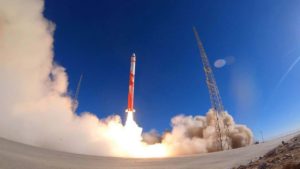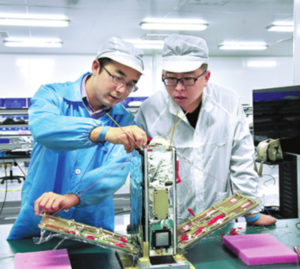
By Blaine Curcio and Tianyi Lan
When reading about the Chinese space industry in English-language media, or when speaking with Western companies about the Chinese space industry, we oftentimes hear two types of opinions:
- China is catching up in space so fast! By Wednesday next week, they will have overtaken the U.S., and we should all be terrified (okay maybe not really Wednesday of next week, but you get the idea);
- China’s space programme is a paper tiger (or dragon, as the case may be). The companies live off of stealing other country’s innovation, there is no incentive structure in place to encourage risk-taking, the whole system cannot work.
Obviously, neither of these very polarized opinions are wholly true. With one of us having spent several weeks recently traveling across China interviewing tens of space companies about their opportunities and challenges, the challenges to China’s development in space are now more apparent.
Challenge 1: Regulations and the Power of Incumbents
Make no mistake about it—Boeing Lockheed Martin, Airbus, and Thales, among others—are some big, powerful companies. They enjoy large market share in most government/military space-related activities, and ultimately have the scale, human resources, and technological capabilities to have an inherent advantage over any challenger. However, when a challenger does something really revolutionary—like launch a Falcon-9 in direct competition with ULA—that challenger is cheered for having been innovative, and for good reason. Indeed, the United States today is one of the leading countries in terms of the extent to which its space administration (NASA) goes out of its way to do business with private startup space companies. The general mindset goes that, companies such as SpaceX are doing innovative things, we as NASA like innovative things, so let’s try to build more SpaceX’s.
In China, it is very different. The main aerospace industrials—CASC and CASIC, though predominantly CASC—enjoy what is essentially a monopoly on any government contracts. Private companies that want any chance of competing would need to either sell components to CASC as a sub-contractor, or would need to create the capabilities to compete with CASC at a systems level. The second option is made impossible by the fact that, as an unwritten rule, Chinese space companies today do not compete with CASC/CASIC for their business. This will be a very difficult dynamic to change. Private companies do not compete for CASC business because they think (correctly) that the playing field is tilted against them, but this will only perpetuate the cycle. The most unfortunate side effect of this is that by not competing against CASC, private companies are also limiting their own scope for innovation. Overall, this system of a space industry as a wholly closed-off ecosystem within government companies will clearly need to be reformed in order for China to have any chance of achieving a high degree of space innovation.
In addition to the major incumbents, the space law in China—or more precisely, lack thereof—can be a hindrance to companies. Today, there are very unclear policies related to what is considered “commercial” in space in China, and in terms of what private companies can and cannot do. For private companies, this oftentimes means waiting until regulations become clear before making any significant moves, which ultimately slows their development and makes it more difficult to know for certain where they can and cannot be playing.

Challenge 2: Time, and the investor’s perspective on it
Investors the world over seem to be becoming more short-sighted, as economic uncertainty, technological change, and other unknowns alter the equation for long-term CAPEX investments. With that being said, Chinese space industry investors (at this point, primarily venture capital funds, with private equity playing a lesser role) are seen as being even more short-sighted than U.S. investors. This is, to a certain extent, understandable—20 years of double-digit property price growth, for example, may have given Chinese investors unrealistic expectations about the speed of returns, and the level of returns that can be expected.
With this being said, many Chinese space companies are feeling the pinch. I recently spoke with the CEO of a Chinese New Space startup who pointed out that SpaceX is a nearly 20-year-old company, and they have only recently started having any significant revenues or path to a chance of profitability. Yet, many Chinese investors put some money into a launch company, and expect that in five years, or even three years, they will have the Chinese SpaceX. This is not how it works.
Overall, the Chinese private space industry has seen a large influx of capital over the past 18 months—this is undeniable. But, to now, this is largely seen as having been raised by investors who do not have very deep experience in investing in space (given the age of China’s commercial space industry—five years—this is perhaps unsurprising). Moving forward, investors will unquestionably become more aware of the peculiarities of space, but it will also be the responsibility of the companies themselves to educate investors on these points.
Challenge 3: Legacy
Legacy is a difficult challenge to define in this context, but essentially, there are very, very few older people in the Chinese space industry, and those who are tend to be rather traditional in their mindset. One of my meetings over the past several weeks was with an industry veteran in his 50s, and a younger colleague. During the conversation itself, the veteran did all of the talking, and was extremely conservative in his stance, believing that commercial space did not have a future in China. His younger colleague obligatorily sat in silence. After the meeting, a chance bathroom trip at the same time led to a short conversation with his younger colleague, whom during those few minutes, expressed wholly different, more open and optimistic opinions on the space industry.

While this anecdote may not hold true for all people in the Chinese space industry, there is a clear trend of relatively few people with deep space experience, and those who do tend to be less open to new ideas. Certainly, in the United States today, older space industry people are also probably more conservative than younger ones. However, veterans of the U.S. space industry today grew up being dared to dream, as they watched NASA’s golden era of space exploration unfold before their eyes. Most Chinese space industry veterans today grew up in a third-world country, where the primary concern was having enough food for the population.
Conclusions
So, what are we to conclude from this? Are the naysayers right, and is the whole Chinese space industry a paper dragon based on IP theft with no future? Are these challenges fundamentally too much to overcome?
Most likely not. The Chinese space industry certainly has a lot of unique challenges, and these will take some time to solve. However, at the end of the day, there are still dozens of companies being run by talented people with consistent vision, and while many of them cannot compete for state contracts at a national level, they do get incentives from cities/provinces at a local level—for instance free land or tax breaks.
The lack of legacy, and general mindset of Chinese space may be the single biggest challenge, but this too is changing. The majority of private space companies I visited recently have open-space offices, and the average age of most of these companies would have a ten’s digit of 3—those who do not, might more often have 2_ than 4_ as their average age. In this way, the Chinese private space industry is a sort of bizarre world of wunderkinds, though admittedly wunderkinds with Ph.D.’s from Beihang and tens of millions from VCs.
The future of the Chinese private space industry will be shaped by these challenges, but it will not be wholly denied, nor wholly defined, by them.

Blaine Curcio is the founder and owner of Orbital Gateway Consulting, a boutique market research and consulting firm focusing on emerging commercial opportunities in space and satellite industry, as well as the Chinese space/satcom market. Blaine is also a senior affiliate consultant for Euroconsult, and is based in Hong Kong. Blaine can be contacted at: [email protected]

Tianyi Lan is the founder and CEO of Ultimate Blue Nebula Co. Ltd., a space and satellite consulting company. Tianyi is also the CEO of SpaceKey and was formerly an engineer at the China Academy of Space Technology (CAST). Tianyi Lan is based in Beijing. Tianyi can be contacted at: [email protected]







